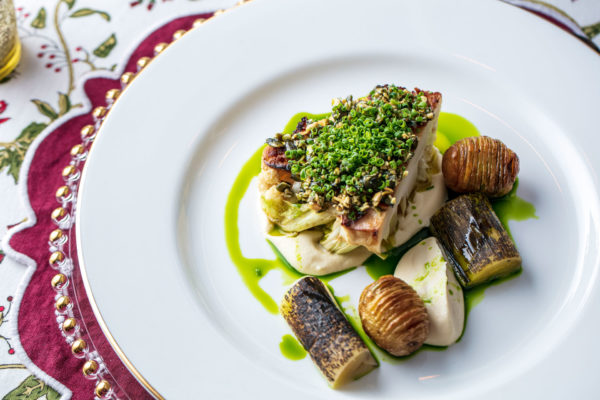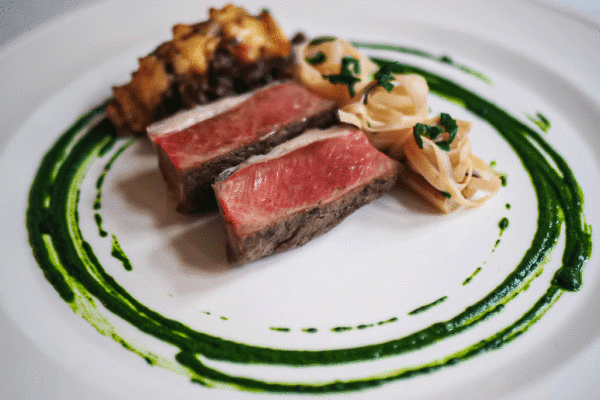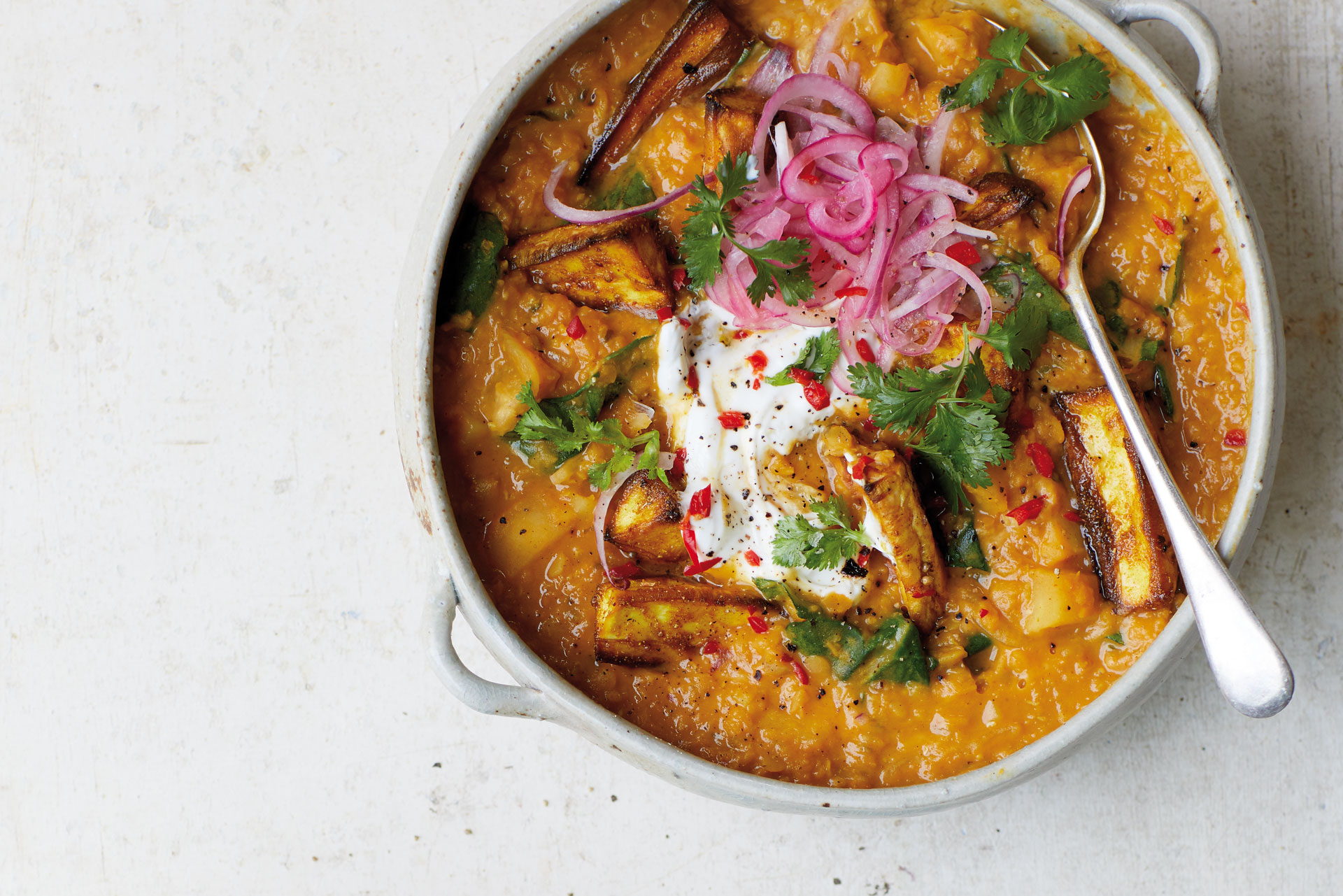
- HOME
- FOOD & DRINK
Zero Waste Week: 6 Zero Waste Recipes To Try This Season
Cut food waste with these eco-minded dishes
By | 8 months ago
In the UK, we throw away a whopping 9.5 million tonnes of food waste every year – and globally, over a third of food produced goes to waste. These are shocking statistics, but we can help the problem from our own kitchens by adopting root to fruit, nose to tail principles in our cooking, and looking for ways to use up ingredients that would otherwise be thrown away. Here we share a selection of zero waste recipes which do just that, perfect for the winter season. And don’t miss these top tips on low waste cooking.
6 Zero Waste Recipes To Try This Season
Zero Waste Apple Tarte Tatin
By Paul Ainsworth
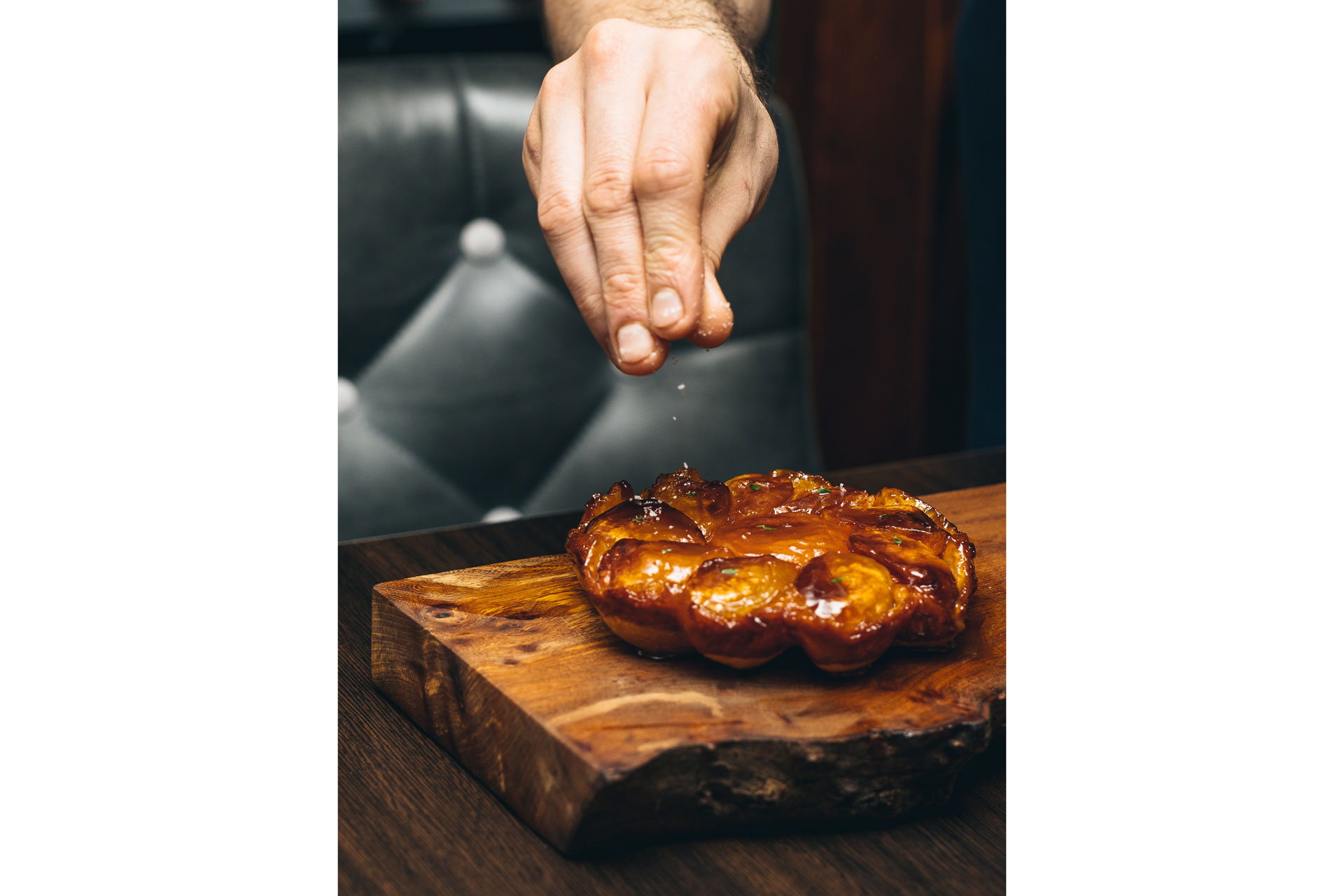
Makes 1 tarte tatin, 4 portions
Ingredients:
- 4 or 5 pink lady or Braeburn apples
- 50g unsalted butter
- 50g caster sugar
- 1 puff pastry disk
Method:
- To prep the apples, peel and core then, and cut in half.
- To build the tart, start by pressing the butter into the bottom of the pan, creating an even layer.
- Add the sugar and shake to level out.
- Lay out the apples, rounded side up, to form a layer.
- Place the pre-cut pastry disk on top and mould around and on to the apples.
- Cut a cross into the centre and a little slit on each apple top.
- Rest in the fridge for a minimum of 30 mins.
- Cook at 170’c, full fan, for 1 hour and check that the pastry is golden brown and crispy and the caramel isn’t getting too dark.
- Serve the tarte with either your favourite blue cheese or ice cream or even a dollop of Cornish clotted cream.
Ultimate Wasted Cauliflower Cheese
By Jack Croft and Will Murray, Chef Patrons of Fallow
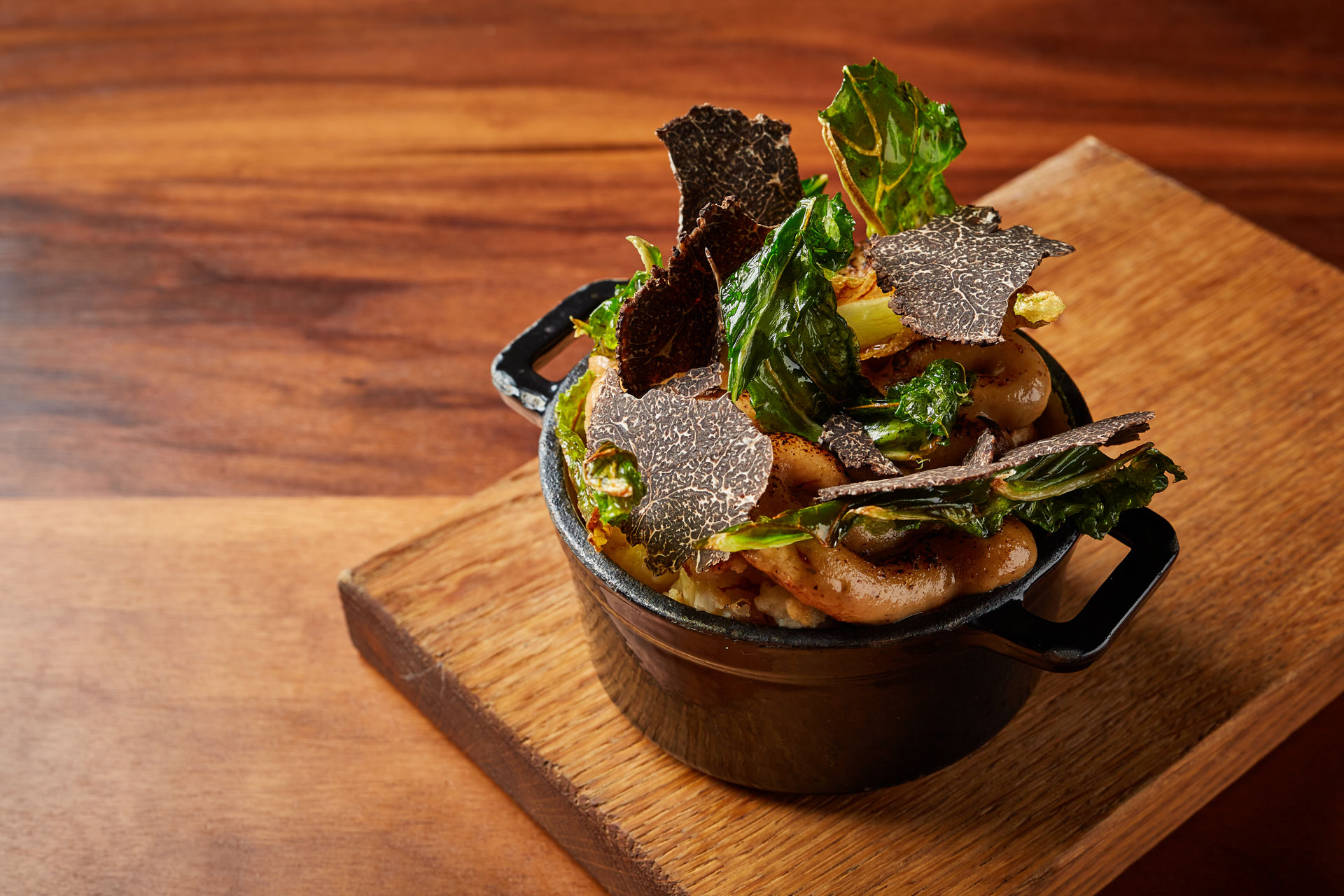
Serves 6
Ingredients:
- 1 large cauliflower
- 500ml milk
- 4 tbsp flour
- 50g butter
- 150g cheese – you can use up odd bits of cheese here like cheddar, Comte, gruyere and parmesan
- 2-3 tbsp breadcrumbs, if you have them (we keep bread that is going stale, whizz it up and freeze the breadcrumbs)
- Salt and pepper
- 1 tbsp wholegrain mustard
- 1 tbsp olive oil
Stalk through leaves – slice into large chunks.
Small white inside leaves and leaves without.
Method:
- Preheat your oven to 200 degrees C.
- Bring a large saucepan of water to the boil and then prep your cauliflower.
- Remove the large leaves and then cut the white stalks out of these.
- Set aside the green leaves and the smaller white leaves that live further into the cauliflower. Break the cauliflower into florets and then chop up the main stalk, and the stalk from the larger green leaves, into large pieces.
- Blanch the florets and stalks for 2 minutes before draining and setting aside.
- Now make your cheese sauce. Melt the butter and stir in the flour to make a roux. Stir for a minute on a low heat and then slowly whisk in your milk and stir for about two minutes until the sauce thickens. Take the sauce off the heat and stir in the cheese, mustard and cauliflower florets.
- Roughly slice the cauliflower leaves and lightly toss in olive oil and salt. Place on a baking tray. Bake both the cauliflower cheese and leaves on different shelves in the oven for 20 minutes. The leaves should be nice and crispy and the cheese should be bubbling and golden brown. Scatter the leaves on top of the baked cauliflower cheese and grate over an extra sprinkle of cheese before serving.
Zero Waste Bread and Butter Pudding
By Paul Ainsworth
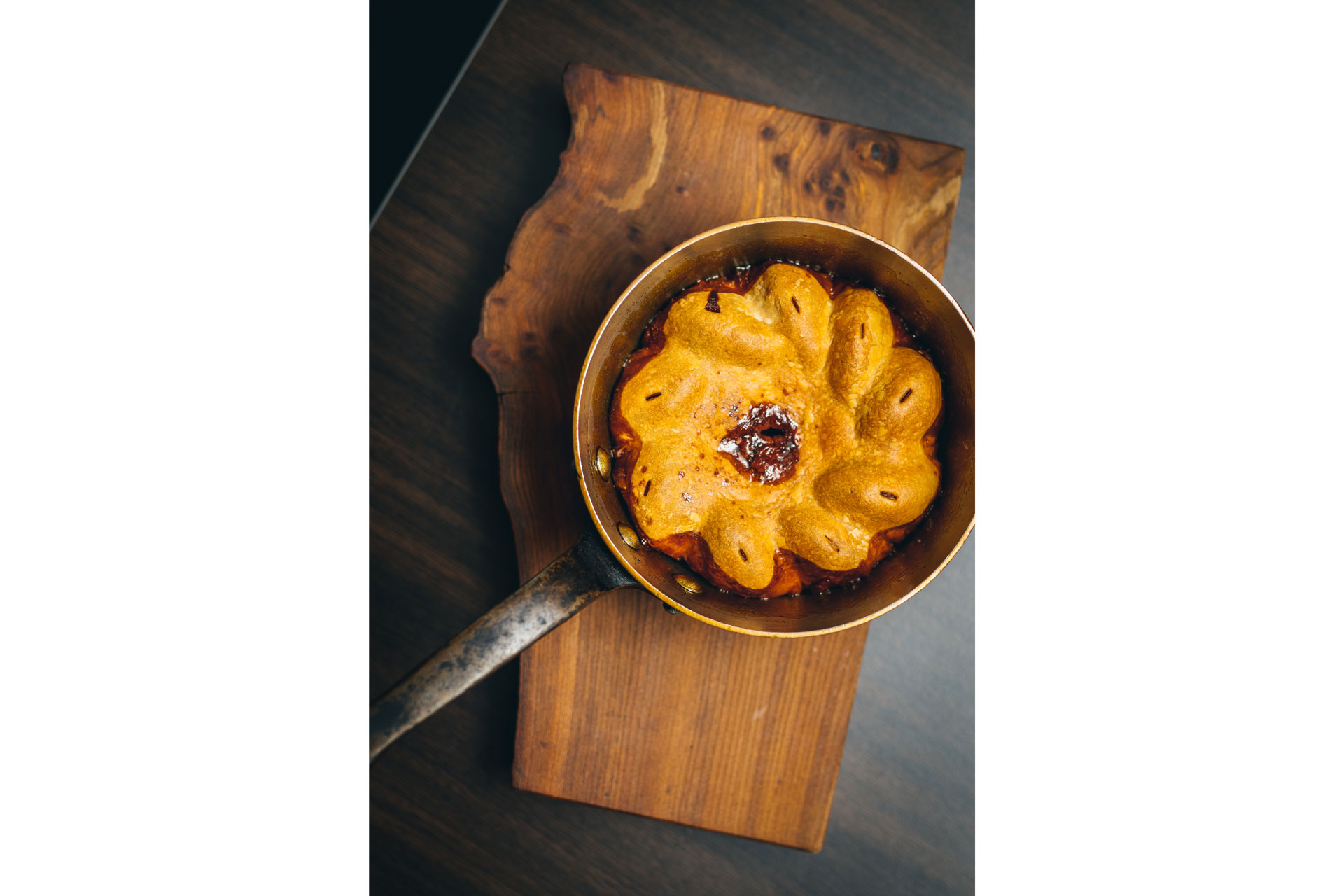
Serves 6
Ingredients:
- 12 slices of white bread, shop bought pan loaf is perfect or you could use up slightly stale/old bread
- 125g unsalted butter
- 80g sultanas or use currants if only available
- 450ml double cream
- 150ml milk
- 2 vanilla pods split, and seeds scraped, you can use vanilla extract if pods aren’t available
- 7 egg yolks
- 175g caster or alternative sugar
Method:
- First make the custard by heating the cream, milk and vanilla, then whisking into whipped egg yolks and sugar. Return to the pan and cook until slightly thickened, pass through a fine sieve and set aside. If you don’t have caster sugar available in your cupboard please use an alternative like demerara or dark soft brown as this will still work but slightly change the flavour and still be delicious.
- Butter the bread and remove the crust, cut the buttered squares into triangles.
- Brush an ovenproof dish with butter, sprinkle the base with some sultanas and start to build the pudding.
- Dunk each triangle into the warm custard and build a layer by reassembling the triangle into squares so you have a complete flat layer with no gaps.
- Lightly cover the first layer with custard and sprinkle with sultanas. Repeat the process until you have 3 layers complete but don’t sprinkle sultanas on the top as they tend to burn.
- Pour over any remaining custard until it is level with the last layer and place a layer of cling film on top. Now soak it in the fridge for at least 12 hours but 24 hours is perfect.
- Top up with extra custard if the bread has soaked it up, otherwise it could be slightly dry once baked.
- Preheat the oven to 115°C 9. Place the dish into a larger tray half filled with water so it’s cooking in a bath of water and bake for about 35/40 minutes until the custard has thickened and the pudding has a slight wobble.
- Leave to cool slightly.
NB: Use whole milk, don’t heat the milk and cream too high or eggs will scramble and if white bread isn’t available you could use up croissants or even wholemeal bread!
No Waste Potato Aligot
By Ben Tish
Ingredients:
- 1kg floury potatoes (eg, Maris Pipers, Desiree, Roosters, but you can use any you have lying about in the fridge), all of roughly the same size – scrubbed and cleaned
- 280g rich, strong flavoured cheese (cheddar, Cheshire, Lancashire – again, you can use anything you have that you need to use up)
- 50-150g firm mozzarella
- 250g double cream
- 120ml milk
- 1 garlic clove, peeled and crushed
- Salt and pepper
Method:
- Submerge the potatoes in a pan of lightly salted water. Bring to a boil and simmer until tender. Meanwhile, grate the cheeses. Once the potatoes are tender, drain them and use a tea towel to rub off their skins.
- Put them through a food mill or potato ricer, then push them through a sieve or mash them very well, until you have a smooth puree.
- Put the puree back into the pan and put on a very low heat. Stir in the creme garlic along with the milk. use a wooden spoon to stir in the cheese.
- Beat vigorously until cheese melted and the puree is smooth. Season and serve.
Parsnip Dahl Topped with Roasted Parsnips & Pickled Pink Onions
By Melissa Hemsley, from Eat Green

This is ideal to make at the end of the weekend with any leftover root veg that didn’t make it into the Sunday roast. It will set you up nicely for Monday’s dinner – just reheat and top with the onions and yoghurt, and then either freeze or enjoy later in the week with dosa-style pancakes or with fresh leaves and a crispy fried egg on top.
Ingredients:
The Dahl
- 4 tbsp ghee or oil
- 5 large parsnips
- 1 tbsp maple syrup
- 2 large onions, thinly sliced
- 4 garlic cloves, finely chopped
- 1 thumb of ginger, finely grated
- 400g split red lentils, rinsed
- 2 large handfuls of fresh coriander
- 3 tbsp tomato purée
- 400ml tin of full-fat coconut milk
- 200g leafy greens, like chard
- Yoghurt, to serve
Spice Mix
- 1 1⁄2 tsp ground turmeric
- 2 tbsp ground cumin or 1 1⁄2 tbsp cumin seeds, roughly ground
- 2 tbsp ground coriander or 1 1⁄2 tbsp coriander seeds
- 2 tbsp black mustard seeds, roughly ground
- A pinch of chilli flakes or chilli powder
- Sea salt and black pepper
Pink pickled onions
- 2 large red onions
- Juide of 2 limes or 4 tbsp vinegar
- A big pinch of sea salt
- 2 tsp maple syrup
Method:
- Preheat the oven to 220°C (fan) and melt two tablespoons of ghee or oil on a large baking tray in the oven.
- Meanwhile, mix the spices in a small bowl and slice up three of the parsnips into about 18 wedges, then toss them in the oil with half of the spice mix.
- Pop in the oven for about 30- 35 minutes, tossing halfway through with the maple syrup, until golden and going crispy at the edges.
- In a large pan, fry the onions in the remaining two tablespoons of ghee over a medium heat for 10 minutes, stirring occasionally. Then add the remaining spice mix, plus the garlic and ginger, and fry for three minutes.
- Add the diced parsnips and lentils, the chopped coriander stems and the tomato purée.
- After a minute, add the coconut milk, then fill up the tin with 1.6 litres of hot water, stirring well. Pop the lid on, bring to the boil and then turn down to a medium heat and simmer for 20 minutes. Stir a few times throughout.
- Meanwhile, scrunch the red onion in a bowl with the lime juice, salt and maple syrup for 30 seconds, then leave in the juice. Once the lentils and parsnips in the pan are cooked, add the chopped greens, pop the lid on so they steam for three to five minutes until just tender.
- Serve topped with the roasted parsnips, coriander leaves, pink pickled onions and their juices and a dollop of yoghurt.
Watermelon Ahi Tuna
By Dom Hammond from Tanaman at Desa Potato Head
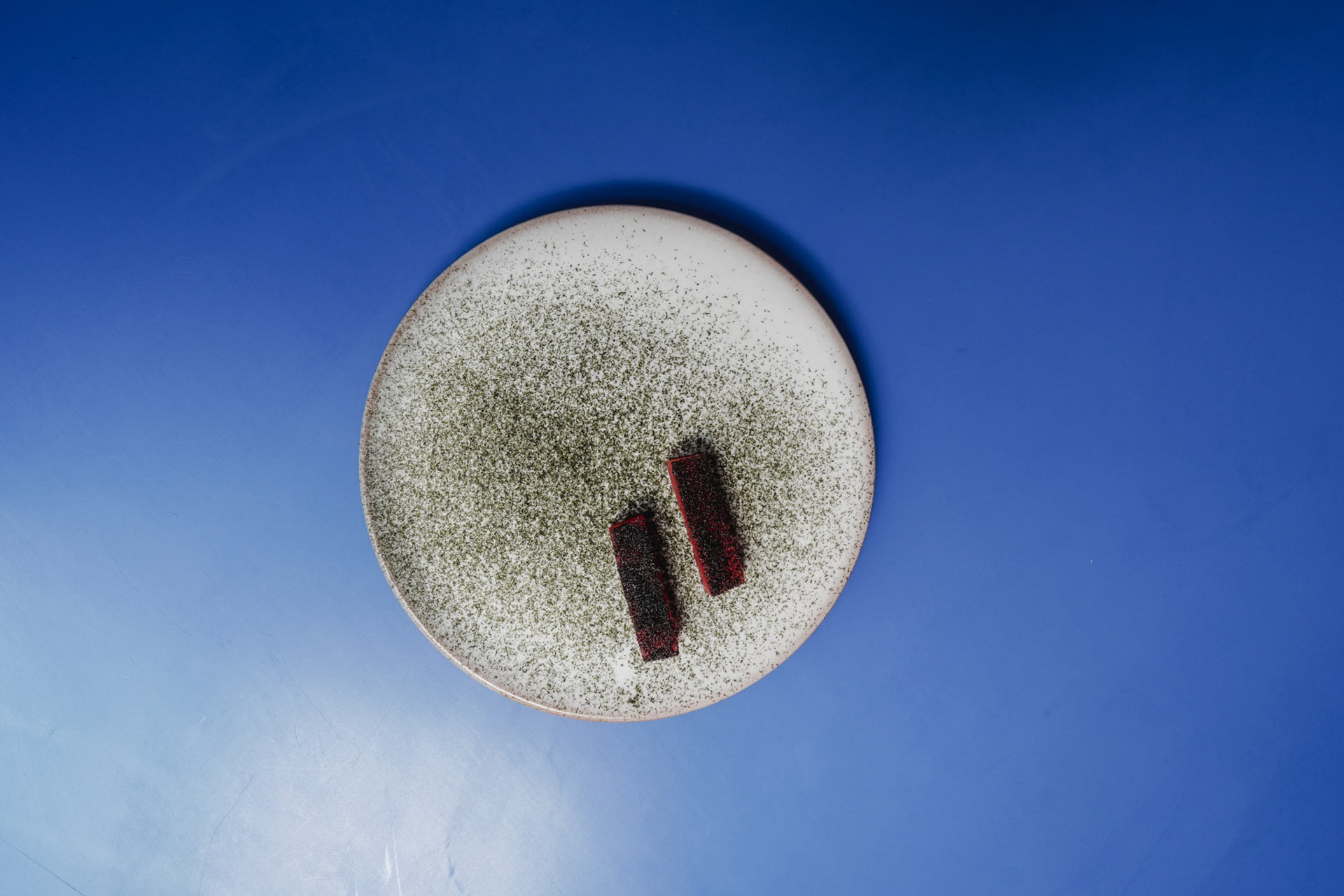
This is currently one of my favourite recipes. The baked watermelon infused with seaweed not only elevates the ocean flavors but gives a beautiful ‘meaty’ like texture to the melon. This is a great substitute for any tuna dish, as well as just a beautiful way of creating something different with watermelon.
Ingredients:
- 1000g seedless watermelon, cut into large cubes
- 2g shio koji (optional)
- 5g sesame oil
- 50g soy sauce
- 1g chili flakes
- 20g neutral oil
- 5g nori paper (torn into smaller pieces)
Method:
- Peel the rind from your melon and cut into large cubes, 5 x 5cm works well.
- Mix together your shio koji, sesame oil, soy sauce, chili flakes oil and nori.
- Mix your watermelon through your marinade and set aside to rest in the fridge overnight. We really want to infuse the flavors.
- Remove your watermelon from the marinade and set aside, keep your marinade for later.
- Line a tray with baking paper and place your watermelon on to the baking sheet. We will now bake the watermelon at 180 for approx 1 hour, checking every so often.
- Once the melon has finished cooking it will resemble a tuna like texture. Now you can brush with your leftover marinade. Feel free to experiment with extra flavor here. You can be creative – you can slice your melon sashimi style or into smaller cubes to create a poke bowl. You can roll your cubes into sesame seeds for an authentic Hawaiian style tuna look.
Chef tips
- If you don’t have access to a seedless watermelon, no worries. Just pick out seeds before baking.
- Mixing through a teaspoon of tahini and some grated garlic into your marinade at the end once you’ve baked your tuna will give you an extra yummy marinade.
- Don’t be scared to experiment with different types of melons.
- Nori dust also works well as a finishing touch for extra ocean flavor at the end. To create your nori dust – pop some nori sheets into a blender and whiz until its powder-like substance.





